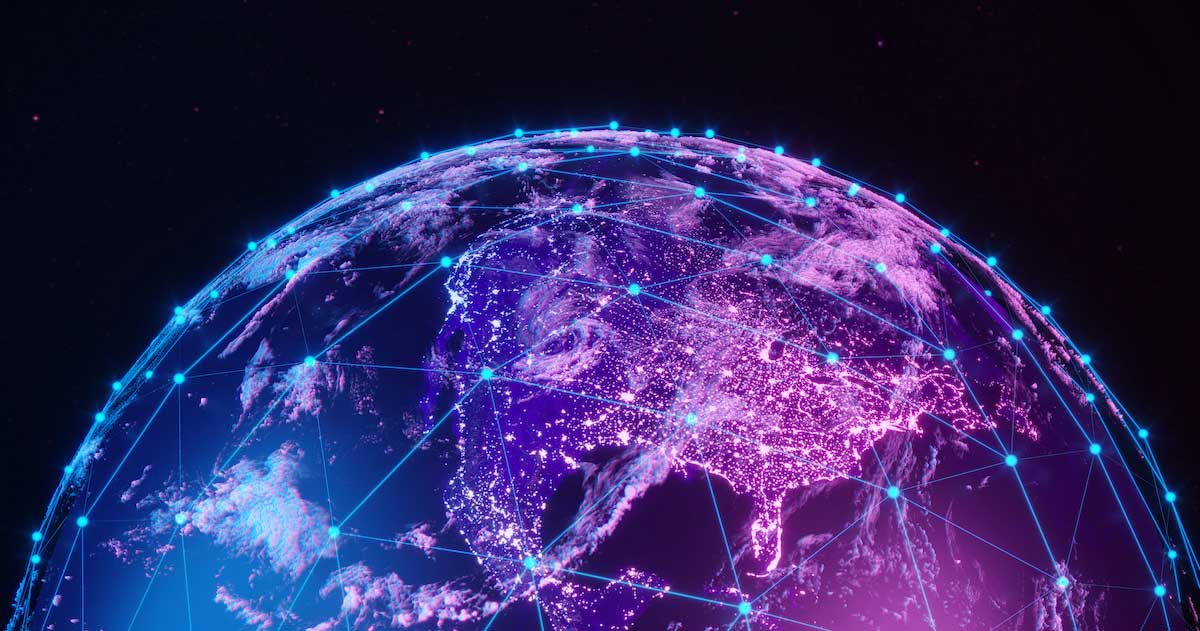From complacency to social media engagement to giving everyone a voice, MPI members from across the globe discuss some of the industry’s most pressing issues. This is part one of a two-part series.
Here are the members who shared their insights with us: Sven Boelhouwer, owner, No Desk (MPI Netherlands Chapter); Tahira Endean, CMP, DES, CED, head of events, Society for Incentive Travel Excellence (MPI At Large); John Ehlenfeldt, CDME, CMP, executive vice president, Visit Huntington Beach - Surf City USA (MPI Southern California Chapter); Tiffany Graham, CMP, senior meeting planner, Ascension Health (MPI St. Louis Area Chapter); Mariska Kesteloo, founder, Word of MICE (MPI Belgium Chapter); Melissa Majors, CEO, Melissa Majors Consulting (MPI At Large); Lisa Meller, CMP, CIS, CED, managing director, Meller Performance Events Group (MPI Orange County Chapter); Alex Plaxen, MTA, president/founder, Little Bird Told Media (MPI Potomac Chapter); Dawn Rasmussen, CMP, chief résumé designer, Pathfinder Writing and Career Services (MPI Oregon Chapter); Arlene Schilke, CMP, DES, managing partner, Timewise Event Management Inc. (MPI Greater Edmonton Chapter); Sarah Soliman Daudin, DES, president and CEO, Soliman Productions Inc. (MPI Greater Orlando Area Chapter); Makiko Yamamoto, president, Finesse Hospitality Management Co. Ltd. (MPI Japan Chapter).
What is the biggest challenge facing the meeting industry?
I think the fear of taking risks is a big challenge facing our industry. The “if it ain’t broke, don’t fix it” mentality is an unfortunate approach to a rapidly changing landscape. I encourage meeting professionals to shake things up, question the status quo, listen to your attendees and don’t make the entire conversation budget focused. Instead, work with partners that align with your vision and want to provide the best experience for your attendees all while helping you generate new revenue streams. -Soliman Daudin
Mediocrity. We will always face external challenges of security, cyber-security and world events impacting our events. We will always be at the mercy of economics and shifting budgets. We will continue to face the challenges of creating content and delivery for an ever-changing demographic. What we can do is what we are best at—collaborate towards success. Stop holding information close and share with our partners, colleagues, competitive “frenemies” and vendors our best practices, and together deliver high-quality events that are worthwhile for our guests whose precious resources of time and money we rely on. Let’s focus on outcomes and impacts, taking ideas outside of the dollars-and-numbers discussions. Let’s build on each other’s strengths, teach our younger professionals and inspire participants—leaving them with aha moments and transformed thinking through the experiences we deliver. Together. -Endean
We are not recognized as professionals! And we often are still seen as party planners and not as strategic partners as a part of the organization or company—which is a pity. We have a lot of knowledge in different and related fields like social media, technical equipment, meeting design, food, integrating the event and connecting with the right location and destination, etc. We give so much back to the local economy, almost more than any other industry, and this must be recognized. -Kesteloo
The biggest challenge facing the meeting industry (and the elephant in the room) is how much our industry still contributes to global climate change. Between airplanes emitting CO2, hotels consuming resources to house attendees and everything else, the meeting industry, despite all of its well-intentioned, green-facing initiatives, still moves a lot of people around the world and consumes an incredible amount of energy. Example: I am one of those crazy people who DOES place the sign in my hotel room requesting housekeeping to NOT service my room/change my sheets, yet they do it anyway. It is so frustrating. If we really sat down and calculated how much C02 our industry causes to be emitted into the atmosphere, it would be pretty staggering. If governments won’t act in the face of worldwide climate change that is causing massive human migrations and animal extinctions, then it must be industries’ duty to do so instead. -Rasmussen
Security—virtually and physically. We need to be on our toes when it comes to cybersecurity and protecting attendee information. And we all definitely need to up our game on physical safety and security. It’s imperative that planners are not only developing emergency plans, but also having drills like we did back in elementary school. The practice will help calm panic in crisis, increase planners’ situational awareness and access what needs to be done, whether it’s leading attendees to safety, performing CPR or applying a tourniquet. And second to that (which will always be a challenge no matter what we do) is client education. They seem to want what they want, no matter how rational of an explanation you give them as to why you are proposing another alternative. -Graham
Pushing the repeat button. Too often organizers are so busy, they don’t take the time to innovate. It’s easy to take last year’s event script and copy the format, change some speakers and use a new hyped app for audience engagement and interaction. But that approach isn’t likely to change delegate behavior or the outcome of the event. Let’s use the power we as event professionals have to make a real difference. -Boelhouwer
The biggest challenge facing the meeting industry is to adapt to the changes and importance surrounding diversity and inclusion and equal pay of women within the workforce. These two important issues must be embraced by all who are involved in the hospitality industry. The meeting and hospitality industry is one of the largest employment sectors in the U.S., and we should set the bar and standard for other industries to follow. With this heavy burden will come great rewards. -Ehlenfeldt
We need to stop thinking about social media as social media marketing. Social media is a tool, not a strategy. It can be used for marketing, customer service, engagement, sponsorship activations, community building and crisis communications. If your social media budget and resources are only for marketing, you’re doing it wrong. -Plaxen
How are you helping attendees maintain their wellness or reduce stress at your events?
Holistic thinking about the participant experience including balancing learning and reflection, play and rest and time for self to recharge for when you need energy for conversation and relationship building. Healthy food, a balance of beverages for hydration, nourishment and fun and avoiding beige food and common allergens and planning for sensitivities. Spaces for mindfulness, physical activity and comfortable dialogue are provided where it makes sense, and ultimately it is about permission to do what you need to do. We invite people to contribute their ideas and share thoughts about what would create a “best” experience for them. -Endean
We have been trying to recommend flexible seating or create a relaxing atmosphere in the meeting space or Zen session at the beginning of the meeting. Also, I am personally learning about brain foods as I would like to recommend some good items with Japanese food for lunch. -Yamamoto
Combining the wellness or stress-relieving aspect with event objectives such as networking or team building offers a fantastic opportunity. During the first day of the four-day European Meetings and Events Conference (EMEC19), we integrated morning activities. Delegates could go out for a power walk or beach running, join a yoga session or have a guided tour in the city center. The second part of the day were cross-industry learning journeys, where delegates joined a field trip based on their personal/professional interests. The third part of the day was built around a plenary keynote speech where the meeting room turned into an escape room. This is just one example of a different approach where wellness (morning activities), stress reduction (gamification) and networking (meeting different people throughout the day) are integrated. The different approach was highly appreciated by the delegates. -Boelhouwer
Quiet rooms with comfortable furniture including a chaise lounge for those who need to lie down. This room can be used for naps, relief from stress and over stimulation, yoga, prayer, listening to music (with headphones). We don’t encourage this room to be used to catch up on emails and work—we have a separate work space, complete with charging stations, for this purpose. -Schilke
For starters, we have a healthy meetings suite that we share with new hosts. We also encourage longer breaks, stretching and movement at meetings. Depending on the duration and attendees, yoga sessions and walking trails may also be incorporated during the planning phase. -Graham
We strive to have attendees get out of their hotel room and experience the destination. As a beach destination, we don’t want you to just go to the beach, we want you to experience the beach with all of its toes-in-the-sand, sun-basked wonder. The experience naturally reduces stress and promotes tranquil fresh air breathing that can be coupled with yoga on the beach, complete with a nice berry smoothie upon completion. -Ehlenfeldt
Intention and focus are placed on designing the agenda to include opportunities for longer breaks and intermixed leisure time, but we are also encouraging morning “mocktails” and healthier food choices—brain food! A super stressed agenda with very tight timelines, limited opportunity for discussion and engagement and super short breaks and transitions adds to anxiety. Working professional adults, especially, need the freedom to know that they will have some downtime to 1) digest the material and 2) keep their businesses running during our events. -Meller
In our chapter, we have implemented wellness during our events. We pay attention that our participants eat healthy food and don’t sit the entire day, but create a balance between different sessions or formats where we focus on experience, interaction and fun. -Kesteloo
In the #MeToo era, we’ve seen increased efforts to empower women in the workplace. Tell us about something your company has done or something you heard about that inspired you.
As a résumé writer and speaker, I am encouraging women to speak out and not just accept things. Unfortunately, in many cases, men have held the upper hand in terms of being the boss who harassed (or worse) female employees. Many women in those types of situations just simply quit and walked away, rather than confront the situation and risk their career. I personally had that situation when I was quite young with a boss who sexually harassed me and also had a huge anger problem. I was scared to death. It took me nearly two years to come out of my shell after I tried to recover from that experience. I speak about this frequently and encourage women to speak up and speak out. We need to call it out into the light and let everyone see it for what it is: unacceptable. -Rasmussen
I am inspired every day by the smart, strong, capable women leading our industry and filling the ranks across all sectors. The board members of the Society for Incentive Travel Excellence (SITE) are certainly representative of our industry, both in globality as well as gender balance, recognizing this is the only way to move forward. Efforts from core industry associations plus the Association for Women in Events (AWE) underscore the challenges we still face in an industry dominated by females in number, until we get to senior leadership where males still hold the majority of positions. With all the work being done in governments and corporations globally to ensure we have more female voices in leadership, I remain hopeful we will see “us” represented and representing our power. Let’s continue to support each other on this journey. -Endean
The Red Tent Project - Voices of Women in Ascension offers a non-judgmental, safe space where women gather to share, listen and understand issues other women in the company may be facing, especially related to professional development. It offers the opportunity to be considered for critical roles in the organization, as well as mentorship for those interested. -Graham
Our organization has a toll free, 24-hour hotline that any employee can call to make an anonymous report about a work situation or employee. The report is then directed to the chair of our board of directors, which keeps the identity of the employee confidential and the chair researches the situation and discusses the solution with the employee. -Ehlenfeldt
It saddens me that it took the #MeToo movement to see an increased effort in empowering women in the workplace. Women should be empowered without a social movement. I have always been a champion for women in business and constantly do what I can to inspire women to use their voice and impact their lives. My colleague Courtney Stanley and I lead a movement called #MeetingsToo, where we encourage meeting professionals to change some of the behaviors that can lead to harassment at events. In addition, I use my social platforms to inspire women in my online sphere. I do so by sharing some of my inner struggles like anxiety and create a welcoming environment where women of all ages feel comfortable approaching me with absolutely anything that is heavy on their hearts and minds. I also advocate for women to be kinder to one another. -Soliman Daudin
Personally, I think this approach to empowerment is a bit over the top. I am not saying that women shouldn’t be at the top, on the contrary. There’s a reason why most event managers are women in the first place—they simply organize better and can do 10 things at the same time. I am often surprised by the fact that nowadays, it apparently needs to be emphasized that women are women. A good industry friend of mine just started as an emcee and is doing a fantastic job. Born to be on stage, truly as if she has never done anything else. Marketing-wise though, she’s promoting herself as “the female emcee.” I simply don’t understand why. I grew up with three sisters and was surrounded by 75 percent female students at university. I appreciate a person for whom he or she is and the way they treat others, not by their sex, the color of their skin or their shoe size. -Boelhouwer
According to the NeuroLeadership Insitute, women are interrupted six times more than men. This issue impacts women’s ability to fully contribute to their organizations. A mitigating tactic that is gaining popularity is called echoing. If you observe a woman get interrupted, you can politely stop the interrupter and say something like, “She just got interrupted so she didn’t get a chance to finish her thought, I would really like to hear the rest of her comments.” This echoing tactic gives the floor back to the women and also creates awareness that interruptions are impacting the fullness of the conversation. Another mitigating tactic that is gaining popularity is called amplification. Women are naturally wired to promote other people, services, etc. However, women are not so great at advocating for themselves. This often creates barriers for the advancement of women. It’s important for both men and women to make a conscious effort to amplify the brand and voice of women who may not have a voice at the table or haven’t learned how to use it yet. -Majors
Truly, the best action I think women can take to elevate themselves is to step up and speak up. Expect that she CAN, that she SHOULD and that she WILL be at the top—and live out that vision with confidence. Elevate oneself by knowledge, experience and professionalism, which are elements widely respected for any industry. What I think is a huge disappointment and a real step back for women is the flood of “#MeToo” cries that pull out very questionable claims about behaviors and activities that happened in a contextually very different social climate—often decades in the past. I think that’s a VERY dangerous trend. -Meller
How have your social media practices changed in the past year or so, and what results have you seen?
Instagram and Instagram Stories have really exploded as a valuable platform for events. The use of ephemeral content to create FOMO and keep your social feeds strategically designed has been a big change for the industry. We don’t need every post about the event to last forever. This method of social media content design has yielded more engagement from followers. -Plaxen
Our social media posts used to focus more on pushing out content and ads to anyone we could hope to reach (spray and pray). Over the past 24 months we’ve transitioned to higher quality content, targeting our market and engagement. Probably the most important thing we’ve done is used social media to tell our story. Stories on Instagram are a great way to have fun and experiment while being real, raw, immediate and intensely personal. We’ve seen a significant increase in quality followers who actively engage with us. We’ve also been more purposeful in engaging with our followers (it goes both ways!), providing feedback, comments and shout-outs. -Schilke
Yes, I made my business out of social media. It’s now my full-time job and much more! -Kesteloo
As an avid social media user, I take notice in what content receives more engagement than others. I used to talk about my business and try to censor my posts by keeping it more professional than personal. But I’ve noticed that my following really enjoys when I blend both aspects of my life and bring them along on my journey. It’s about establishing trust digitally by being authentic. Allow people into your personal space, share personal stories and be raw and real in your delivery. By doing more of that over the past two years, I have not only grown my network, but developed new relationships that have served me well both personally and professionally. -Soliman Daudin
In the past year, we have seen visitors take to our social media channels for immediate needs to enhance their experience in our destination: “Where can I buy sunscreen near the pier?” or “It has started to rain and I am at the beach—now what is there to do?” Our team monitors social media seven days a week to provide the immediate remedy or options available to our visitors and guests. -Ehlenfeldt
I’ve finally broken down to open an Instagram account! I see Facebook on the decline but still relevant while we are in constant social media transition. Video and photo imagery are the way to market, but we must be aware of our audience and their modes of communication. I still have attendees who don’t like online registration, and yet others crave every widget and app they can grab! I’m sure I am not alone in saying that it’s hard to keep up. -Meller
I try to always have an open mind, and willingly listen to arguments that counter my own beliefs to always be growing and learning—keeping an open mind. But with today’s vitriol and political divisiveness on social media, there is no open-mindedness, and as a result, I have disconnected from former friends who choose to post things that are not fact-based, and are instead non-factual, angry, misogynistic, racist and derogatory. If there is a point someone wants to make, I am all ears if they can present it in a civil discourse supported by fact. I have had my mind changed by well-thought-out arguments that I never thought I would consider. But once I heard the argument and better understood their viewpoint, I came around. However, when people end up screaming and turning into trolls, that’s not a discussion; it’s a beat-down. -Rasmussen







